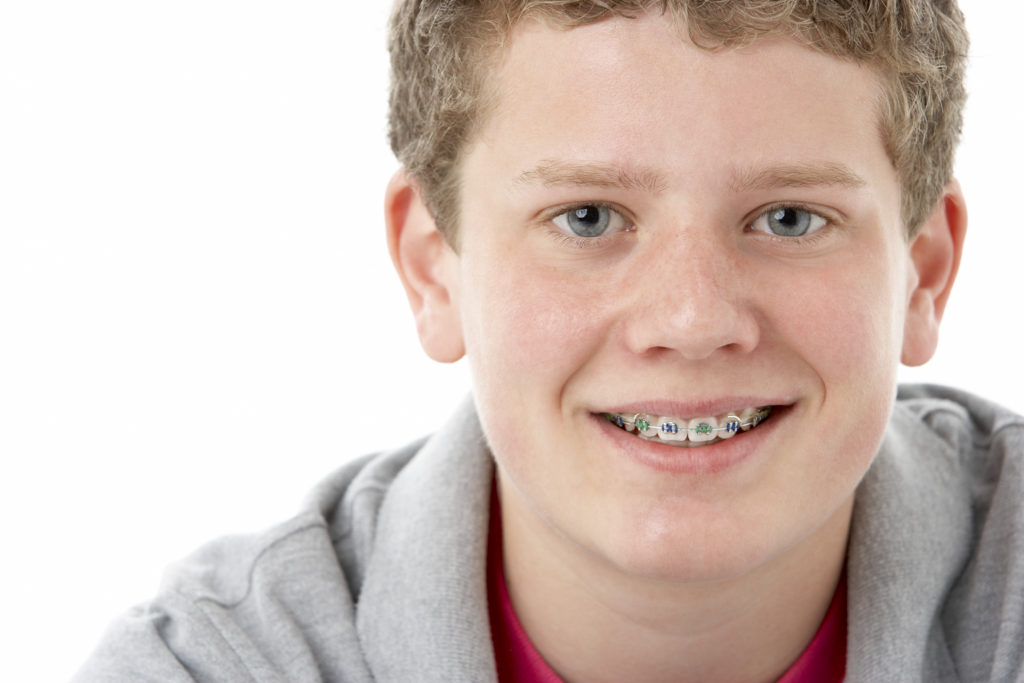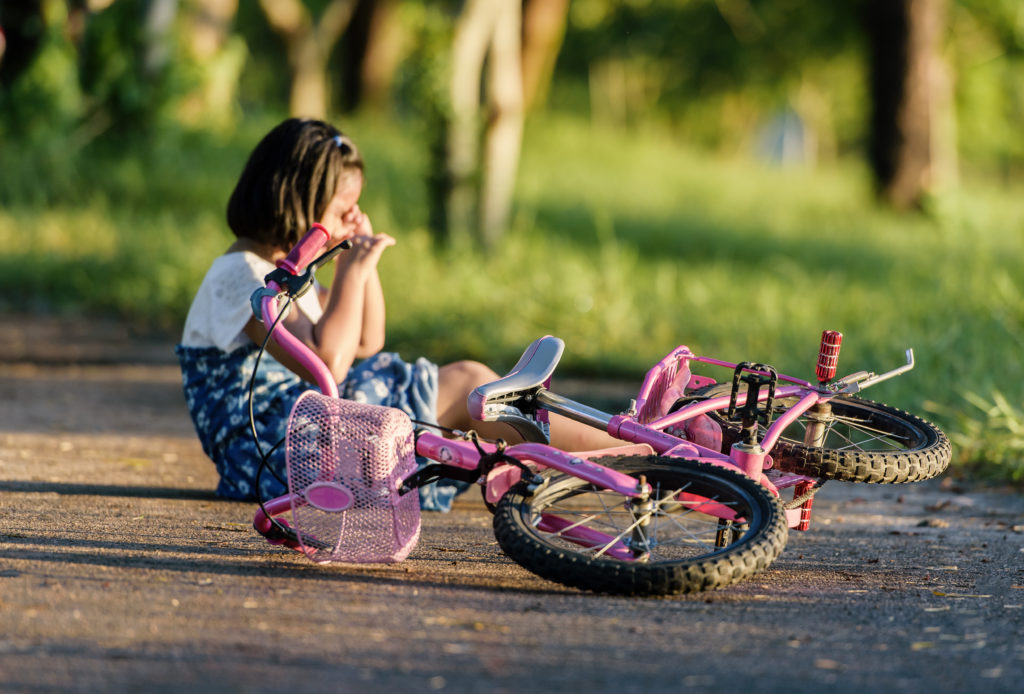CHILDREN:
THE PRIMARY YEARS
Dental decay is on the rise with estimations by the Australian Institute of Health and Welfare that 50% of all 6 year olds have some decay in their baby and adult teeth.
We get asked a lot of questions about children and the issues below but this list is not everything so please ask us if you have any concerns
Fissure sealants play a central role in the treatments we often do for children
Fissures are the groves which naturally occur on the biting surfaces of the teeth. If they are deep, toothbrush bristles cannot fit and therefore food and bacteria get trapped causing decay.
A fissure sealant is a micro-thin, plastic sealant which is placed on the chewing surface of a tooth. It fills in the grooves and pits and reduces the risk of decay as the sealant forms a physical barrier to plaque and food.
It’s a quick procedure and very effective in preventing decay
Most contact sports sensibly require participants to wear a mouthguard. Their ability to help protect teeth in a collision is well-documented. Low quality and incorrectly fitted mouthguards can be loose fitting and uncomfortable, they can slip, interfere with speaking abilities and more often than not you will get a lot of objections to using them. We provide a fitting service to ensure that your child’s mouthguard is as comfortable as possible, in a colour or pattern they like and offers the best protection.
Fluoride is a natural mineral that strengthens tooth enamel and protects against decay. Most capital cities have optimal amounts of fluoride added to tap water. Some areas have natural occurring fluoride in the water however, if you live in an area where fluoride is not added to the water supply please talk to your dentist about what treatment is possible and appropriate.
- Because we salivate less in our sleep, the brushing session before bed is especially important to help prevent decay and plaque build-up.
- Teach your child to brush his or her own teeth as soon as you feel they are ready. Make sure you still keep an eye on them until they’re about 10 to ensure they are doing it properly.
- There are many products around that let you all see how well the brushing is going. Disclosing tablets or fluid are a wonderful teaching aid.
- Use disclosing tablets or fluid after they have brushed their teeth
- Put 2-3 drops of the fluid on their tongue and swirl it around for about 20 seconds before spitting out
- Whatever is still dirty will have turned red
- They brush the red areas until all the red is gone
- Now their teeth, gums and mouth are clean
- Please note – their lips will go red so probably best before bed rather than before school!
- Training is easier if you brush your teeth at the same time as them.
- As for two-minute timing, get an electric toothbrush which times if for them or listen to favourite song of about that length to get them into the habit.
- Purchase some child-friendly brushes and toothpastes as these can also help convert the reluctant brusher
- Flossing is essential once the teeth are touching each. It may take them until they reach 10 years old before they are able to floss by themselves, so help is needed here.
For advice on correct brushing and flossing techniques, click here
Orthodontics, Braces or Malocclusion all sound rather complicated but they all simply mean that the teeth or jaws are not quite in the right place. There is no right age for beginning work it depends on the child and their development so it is important problems are assessed early so opportunities aren’t lost and well-considered decisions can be made for each individual. We can help you by pointing out any potential problems and referring you to the appropriate specialist if and when required. We are also able to monitor progress and help your child to stay on top of brushing whilst undergoing treatment.
Some reasons for which you may need braces are
- Unsightly crowding
- Problems with bite alignment
- Unsightly spacing
- Trauma
Braces can be difficult to clean and broken braces require a trip to the orthodontist but doing both is vital in maintaining the integrity of your braces and your oral health during treatment so you can experience a wonderful outcome.
Here are some helpful hints:
- Use an electric toothbrush will help keep all your surfaces clean
- To clean under the wires easily use a small brush called ‘Piksters’
- Avoid hard foods such as nuts and hard biscuits.
- Foods such as apples and carrots should be grated or chopped into small pieces before eating to reduce the stress on your braces.
- Avoid sticky foods such as caramels, toffees, muesli or fruit bars. No chewing gum!
- Habits such as nail biting, unnatural tongue thrusting, pencil chewing and nervous picking at your wires can also break braces.
- Have regular check-ups with your dentist
If the teeth and braces are not kept clean there can be permanent changes to your teeth such as:
- Areas on the enamel surface may begin to lose minerals (the early stage of tooth decay) leaving unsightly white spots on your teeth at the end of treatment
- Teeth erosion can occur around the brace and when the braces are removed you are left with a square of different height in the centre of your tooth and a patch work appearance for your smile
Pain
Sometimes after appointments where the wires are adjusted there can be some pain. This can be managed with paracetamol (or your normal pain medication) and will usually only last 24 hours. If it lasts longer than a couple of days please contact your orthodontist.
What if my braces break?
If you get a broken wire which causes pain and or irritation, cover the loose end with wax, a small cotton ball, piece of gauze gum and get to your orthodontists as soon as possible
Toothache
If your child develops a toothache, in the first instance, make an appointment with your dentist. If an infection is present this needs to be treated quickly so try to avoid delaying treatment.
The steps below can be followed for temporary relief:
- Have your child rinse their mouth thoroughly with warm water (add a teaspoon of salt to the glass of water) and use dental floss to gently remove any food or debris that may be lodged between painful teeth. Do not use a sharp or pointed instrument in trying to remove any debris as this may damage teeth or injure your child
- If it is safe for your child paracetamol may be given for pain until your child can be seen by the dentist. Paracetamol should be swallowed rather than placed on the aching tooth or gum
- If there is swelling present, place a cold compress on the outside of your child’s cheek to minimise the swelling
Broken Braces or Retainers
If you get a broken wire which causes pain and or irritation, cover the loose end with wax, a small cotton ball, piece of gauze or chewing gum and get to your orthodontists as soon as possible
Knocked out teeth
Seek dental assistance ASAP – time is critical
- Call us on 9882 5566
- If we are not available call the Kew Dental Emergency Clinic on 9817 3685
- If you are unable to reach a dentist then please contact a healthcare professional.
Important Points to note:
- Hold the tooth (the white bit) not the roots
- Do not scape or rub the root surface
- Do not let the tooth dry out (keep in milk if possible – not water)
- Do not put the tooth in ice
- Avoid rinsing or storing the tooth in water for more than one or two seconds
- Do not remove any tissue or gum fragments from the tooth
What to do:
- Find the tooth. Handle it only by the crown (the white bit) and ensure it is clean.
- If the root is dirty and your child is calm and conscious, see if they can gently suck the tooth clean. Alternatively, rinse the tooth in milk or, VERY briefly, water
- Immediately replant the tooth in the socket making sure the tooth is facing the right way around. Time is critical and immediate replacement is best and ideally should not be delayed more than 30 minutes
- Hold the tooth in place or get the child to gently bit down on gauze or a soft cloth
- If you are unable to replace the tooth, keep it moist by putting it in a cup of milk, sealing it in a plastic or placing it in the child’s mouth next to the cheek (if the child is able to do so and you don’t think they’ll swallow it)
- Seek immediate dental treatment – TIME IS CRITICAL
To help prevent against a broken or knocked out tooth always ensure your child is fitted with a custom made mouthguard when participating or training in contact sports
Cut or bitten tongue, Lip or Cheek
Most mouth injuries heal without intervention however if you are concerned seek professional advice from a dentist.
- Call us on 9882 5566
- If we are not available call the Kew Dental Emergency Clinic on 9817 3685
- If you are unable to reach a dentist then please contact a healthcare professional.
In the meantime:
For any injuries that result in bleeding, apply pressure directly to the injured area with a clean cloth or gauze pack. This will help to control the bleeding. However, if bleeding does not stop within about 15 minutes, bring your child into see us or if we are not available, take your child to the emergency room or your nearest health professional. If the injury is severe it may require stitches.
To minimise swelling, you can apply ice or a cold compress to your child’s face at the site of the injury
What to avoid
All fizzy drinks (soft drink, sports drinks, fruit juice)
- The bubbles are caused by acid. So even mineral waters are problematic.
- If you are unable to stop at least consume through a straw and drink in one go as this reduces the time exposed to the acid and sugar.
- No sipping over a long time
- Don’t be fooled by diet drinks or mineral water, these still contain problematic acids
No food or drink 60 minutes before bed
Chewable Vitamin C tablets
Helpful hints
- Vitamin C is an acid and therefore dissolves enamel so a chewable vitamin C tablet is a real problem. If you MUST take a vitamin C tablet, please swallow them – don’t chew
- Look at the nutritional panel and try to keep the sugar content below 15%
- Rather than having lollies in the house, buy a treat for your child once a week.
- Try to avoid sticky foods like artificial and natural jellies, snakes, roll-ups, chupa-chups etc as they tend to stay in the mouth for a long time. Instead consider treats which pass through the mouth quickly such as icy-poles, ice-cream, Freddo frogs
- Do grocery shopping without the kids
- Check the nutritional panel when buying those lunchbox snacks – remember to try to stay below 15% sugars. Fruit is great for lunch boxes, even if you have to dip part of it in chocolate to get past the initial objections
- The best cereals according to the institute of sport are Weet-bix and Vita Brits. The cereals which cause the most damage to teeth are Nutri-grain and Coco-pops (Check the nutritional panel when selecting your cereal)
- If children are given lots of sweets like at parties or Easter encourage them to eat all at once rather than over a long period of time
- Do your best to make party bags rather than lolly bags
Remember – for your teeth – it is the number of times which teeth are exposed to sweet, sticky and acidic things which causes the problems not the amount consumed!
Diet
- Water: No drink is better for your general health and only calcium containing milk can be said to be as good for your teeth (so long as not right before bed)
- Fresh fruit and vegetables: The fibre in foods like apples, carrots and celery “brush” the teeth and gums and promote the production of saliva which is the body’s first line of defence against decay
- Dairy: Our teeth love the calcium in dairy (milk, yogurt and cheese) because it replaces the minerals leeched from our teeth every day. Cheese is also excellent because it scrubs the teeth and stimulates saliva production and the casein in it fights the acids in your mouth – it also contains plenty of fat so everything in moderation!
- Dried fruit and crackers: Best to be avoided. Dried fruit like raisins and sultanas and apricots are full of energy and goodness but they can be among the nastiest things for your child’s teeth as they get stuck on the teeth for hours. During this time, the mouth bacteria turn it into acids which attacks the enamel. The same goes for crackers
- Vitamin Tablets: Vitamin C is an acid and therefore dissolves enamel so a chewable vitamin C tablet is a real problem. If you MUST take a vitamin C tablet, please swallow them – don’t chew.
It’s possible to purchase containers which will keep food warm until lunch. This can provide you with more options
Helpful suggestions
- Fresh fruit and berries
- Carrot with hummus
- Sandwiches
- Pasta
- Sausages/Hot dogs
- Soup
Sugar causes tooth decay
It is the number of times teeth are exposed to sweet, sticky and acidic things that is important, not the amount consumed
From personal experience the party bag is often a lolly bag, filled with a selection of lollies from well-meaning parents.
When it’s your turn to create a party bag, try to be creative with what’s in the bag. I admit it takes a bit of thought and preparation to prepare one as cheaply as throwing in a bunch of lollies but over the years children have loved our party bags and it’s been well worth it.
When it’s your turn to create ‘the bag’, here are some suggestions:
- Glow sticks (can be bought in bulk and a couple in each bag)
- Stickers
- A couple of coloured pencils, crayons or pens.
- Pencil sharpeners
- Shaped or Scented erasers
- Homemade puzzle books (puzzles can be bought or found on-line)
- Balloons (or water balloons depending on the time of year)
- Slime
- A little tub of playdough
- Hair ties and clips
- Cheese sticks
- Novelty items (can be purchased in bulk when on sale)
- Ask your child, they can be amazingly creative with ideas and can love creating their bags to give to friends
- CD with all their favourite songs
- Or avoid the bag altogether and just give a helium filled balloon
Hints for when you come home with a ‘party bag’
- Eat all the lollies in one go, don’t ration them out (Remember – it’s not the amount consumed it’s over what period and how often)
- Avoid the sticky foods which stick to the teeth for ages (Sultanas, dried apricots, minties, fantails and even snakes)
- Lolly pops and chupa-chups should be given a time limit and then thrown away (we used to do 5-6 minutes and we timed to avoid the debates and persuasive arguments occurring)




